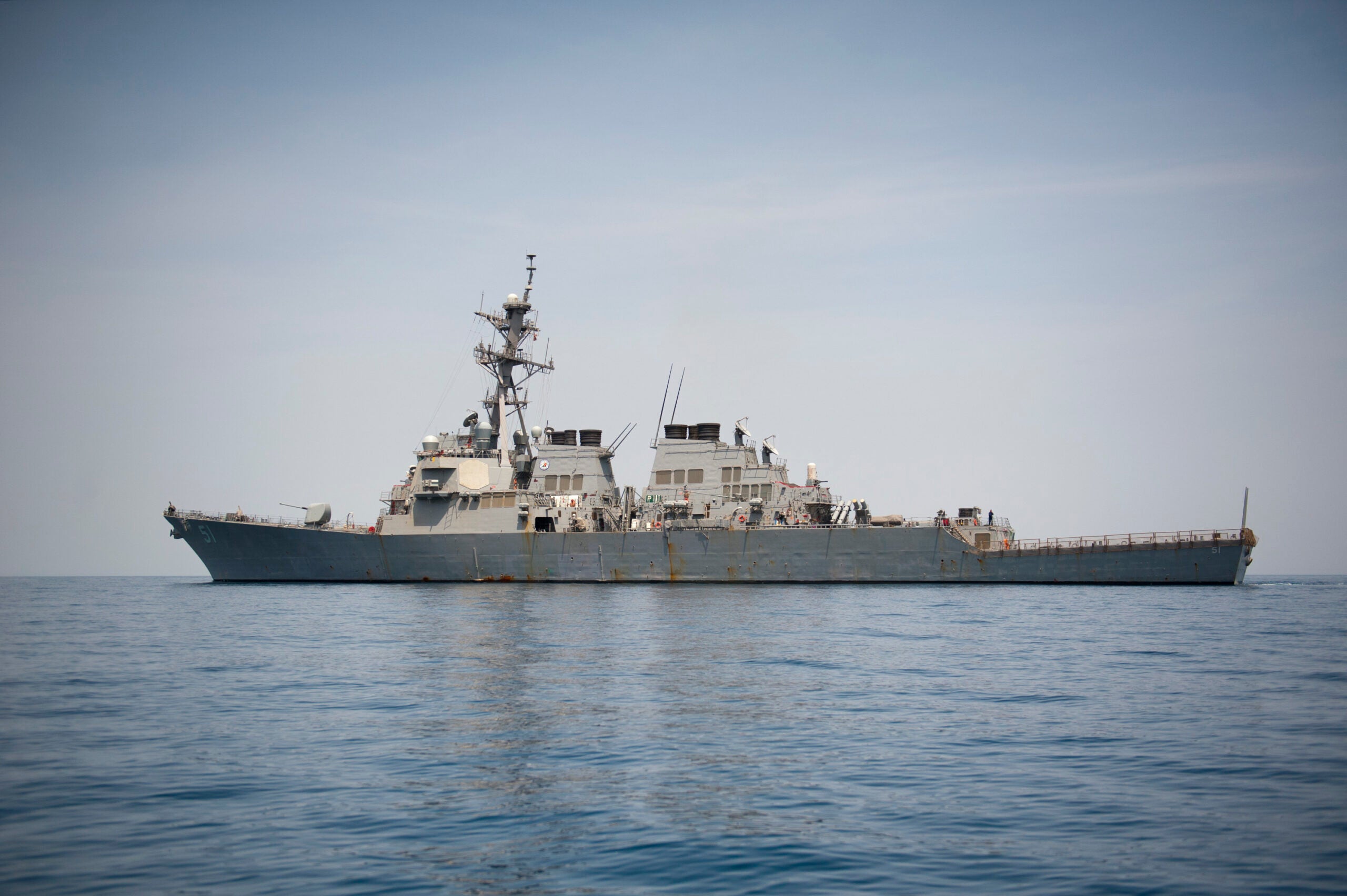
Specifications for the Next-Generation Destroyer and Submarine
Speaking at a Defense One event, Gilday said that the future Destroyer – dubbed DDG Next – would likely be smaller than the Zumwalt-class destroyer, but include a larger missile magazine than the US Navy’s current ships.
Gilday said: “When you talk about large surface combatants, people in their mind’s eye, they’re thinking battleship. That’s not where we’re going. We’re talking about a ship that’s going to be probably smaller than a Zumwalt, right? I don’t want to build a monstrosity. But I need deeper magazines on a manned ship, deeper than we have right now.”
Flight IIA variant Arleigh Burke-class destroyers have a displacement of 9,500 tonnes, and Zumwalt-class destroyers have a displacement of nearly 16,000 tonnes.
The CNO said the newest Flight III variant Arleigh Burke-class destroyers are limited in terms of additional ‘stuff’ that could be added onto the ships. Systems and technologies from those ships, however, would likely be put onto the new hulls to give the navy room to add new capabilities to a future destroyer over its service life.
Commenting on the ‘next destroyer’, Gilday added: “that would be a new hull, right? But what we would leverage is existing technologies to put on that hull, right, and then to update, modernise those capabilities over time.
“So think DDG-51 [Arleigh Burke]. That’s essentially what we did, right? We built a new hull, we put Aegis on it. We put known systems that were reliable and were already fielded [tested] out in the fleet. And that’s kind of the idea.”
Gilday added: “In my mind, based on the work we’ve done in the Pentagon, smaller than a Zumwalt, but packing some power.”
During the event, Gilday also added that a future destroyer would likely borrow the power generation capabilities of ship’s like the Zumwalt to ‘sustain weapons like directed energy’ that would make the ship and the wider navy fleet more ‘survivable’.USS
SSN(X) the future attack submarine
Commenting on the next-generation attack submarine or SSN(X), Gilday said that ‘significant and important R&D’ efforts were currently underway with ‘money’ already put against it.
Gilday said the advantage the US has in the subsea domain was one that needs to be maintained but also something the navy needed to expand. Gilday added: “I want to own the undersea forever because I know that I can be really lethal from the undersea.
“I know in terms of sea control and sea denial that that’s a significant advantage that I can – that we can bring to bear for an operational commander and the rest of the joint force.”
The CNO added that the future attack submarine was not just about ‘a lot of missiles’ but also speed. Gilday said: “The inherent mobility of naval forces is really important. When you think attack boat, you’re thinking an asset that I can move around so that I can meet the timing and tempo of an operational commander’s need to deliver ordnance on a target in a timely fashion. And so it’s got to be a fast sub as well.”
The comments from Gilday come as the US Navy has wrapped a force structure assessment that will see the navy develop plans to build a 500-ship navy.
During a recent speech at Center for Strategic & Budgetary Assessments, Secretary of Defense Mark Esper said: “Battle Force 2045 calls for a more balanced Navy of over 500 manned and unmanned ships.
“Further, we will reach 355 traditional Battle Force ships prior to 2035, the time at which the PRC aims to fully modernise its military. And most importantly, we now have a credible path for reaching 355 plus ships in an era of fiscal constraint.”
Under the proposed force the US Navy is set to build a larger submarine fleet, begin building three Virginia-class submarines a year ‘as soon as possible’. Under the plans, the navy could also supplement nuclear-powered aircraft carriers with light carriers that use short takeoff or vertical landing aircraft (STVOL) like the F-35B.
During his speech, Esper said that the Pentagon was considering using vessels like the America-Class light carrier to provide ‘additional presence and capacity to carry out day-to-day missions and free up supercarriers for more critical high-end fights.’




